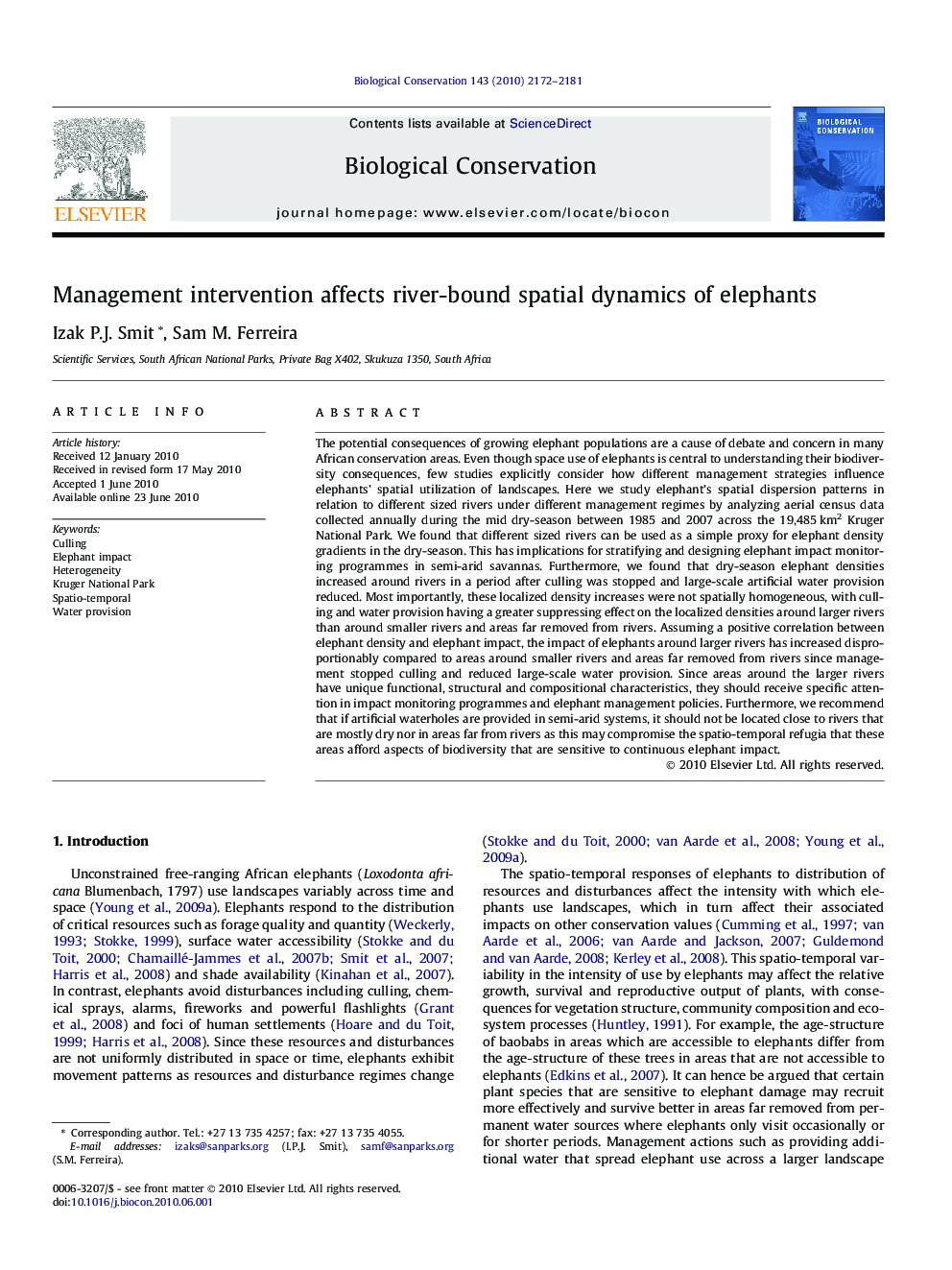| Article ID | Journal | Published Year | Pages | File Type |
|---|---|---|---|---|
| 4385825 | Biological Conservation | 2010 | 10 Pages |
Abstract
The potential consequences of growing elephant populations are a cause of debate and concern in many African conservation areas. Even though space use of elephants is central to understanding their biodiversity consequences, few studies explicitly consider how different management strategies influence elephants' spatial utilization of landscapes. Here we study elephant's spatial dispersion patterns in relation to different sized rivers under different management regimes by analyzing aerial census data collected annually during the mid dry-season between 1985 and 2007 across the 19,485Â km2 Kruger National Park. We found that different sized rivers can be used as a simple proxy for elephant density gradients in the dry-season. This has implications for stratifying and designing elephant impact monitoring programmes in semi-arid savannas. Furthermore, we found that dry-season elephant densities increased around rivers in a period after culling was stopped and large-scale artificial water provision reduced. Most importantly, these localized density increases were not spatially homogeneous, with culling and water provision having a greater suppressing effect on the localized densities around larger rivers than around smaller rivers and areas far removed from rivers. Assuming a positive correlation between elephant density and elephant impact, the impact of elephants around larger rivers has increased disproportionably compared to areas around smaller rivers and areas far removed from rivers since management stopped culling and reduced large-scale water provision. Since areas around the larger rivers have unique functional, structural and compositional characteristics, they should receive specific attention in impact monitoring programmes and elephant management policies. Furthermore, we recommend that if artificial waterholes are provided in semi-arid systems, it should not be located close to rivers that are mostly dry nor in areas far from rivers as this may compromise the spatio-temporal refugia that these areas afford aspects of biodiversity that are sensitive to continuous elephant impact.
Related Topics
Life Sciences
Agricultural and Biological Sciences
Ecology, Evolution, Behavior and Systematics
Authors
Izak P.J. Smit, Sam M. Ferreira,
